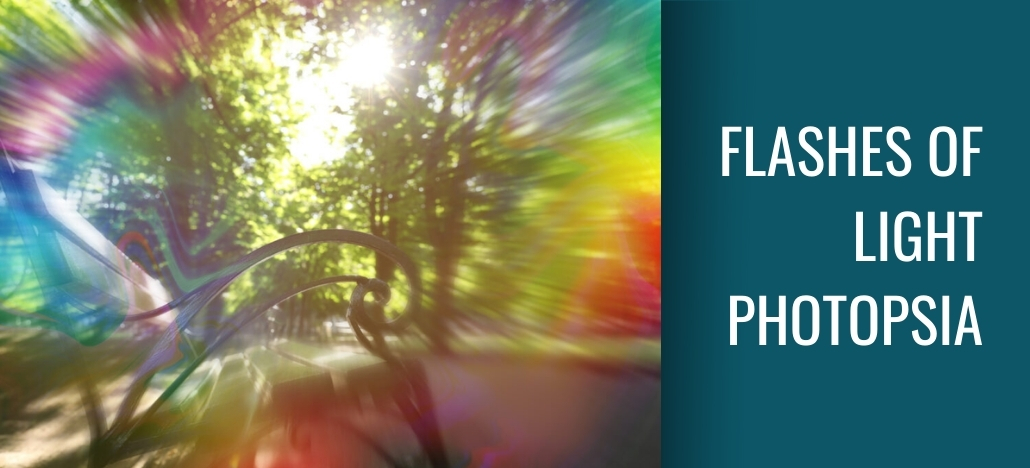
Flashes of Light Photopsia: Causes & Treatment
Flashes of light in your vision, medically known as photopsia, is often described as brief, unexpected bursts of light that appear without any external source. Photopsia can occur in one or both eyes and may be a sign of various underlying conditions. Understanding the causes, symptoms, and available treatments for eye flashes is crucial for those who experience them.
What are Photopsia (Eye Flashes)?
Photopsia is a medical term used to describe the sensation of seeing flashes of light without any real visual stimuli. These flashes may occur suddenly and are often described as streaks, flickers, or sparkles. People who experience photopsia may notice them in the corner of their vision, or they may appear as random bursts of light. The photopsia meaning is related to visual disturbances caused by the retina or other parts of the eye. The flashes of light in the eye may vary in intensity and frequency, and they can last from just a few seconds to several minutes.
Causes of Eye Flashes
There are several causes of photopsia, some of which are benign, while others may be indicative of serious underlying conditions. The most common causes of photopsia include issues related to the retina, such as retinal detachment, which occurs when the retina pulls away from the back of the eye. This condition requires immediate medical attention, as it can lead to permanent vision loss if left untreated.
Another common cause of photopsia is posterior vitreous detachment (PVD), which occurs when the vitreous gel inside the eye begins to separate from the retina. While PVD is often not dangerous, it can lead to the development of retinal tears or detachment. Trauma to the eye, including blunt force injuries, can also cause flashes of light in the eye. Additionally, conditions like migraines with aura and high blood pressure may trigger photopsias, though the underlying mechanisms differ from retinal causes.
Symptoms of Photopsias
The symptoms of photopsia vary depending on the underlying cause. Flashes of light in the corner of the eye are a common symptom, but individuals may also experience other visual disturbances. These flashes may be accompanied by floaters, which are small specks or threads that drift across the field of vision. Photopsia can also cause a sensation of flickering lights or sparkling in the peripheral vision. The intensity and frequency of photopsia can change over time. Some people may experience occasional eye flashes, while others may notice a more consistent occurrence. For individuals with retinal issues, the flashes may be more pronounced in dim lighting or when moving the eyes rapidly. It is essential to note that while photopsia can be alarming, not all cases are dangerous. However, seeking medical evaluation is crucial to rule out severe conditions.
How are Photopsia (Eye Flashes) Treated?
Photopsia treatment depends on the cause. If the flashes of light in the eye result from a retinal detachment or tear, surgical intervention may be necessary to repair the retina and prevent further damage. Laser surgery or cryotherapy may be used to seal retinal tears and prevent detachment. In cases where posterior vitreous detachment is the cause, treatment may not be necessary unless complications arise, such as a retinal tear.
For individuals who experience photopsia due to migraines with aura, treatment focuses on managing the migraine itself. Medications to prevent migraines or reduce their severity may help reduce the frequency of photopsia. High blood pressure, another potential cause of photopsia, should be managed with lifestyle changes and medication to lower the risk of further visual disturbances. In most cases, treating the underlying condition helps alleviate the flashes of light in one eye or both.
When to Seek Medical Attention?
It is essential to seek medical attention if photopsia occurs suddenly or is accompanied by other symptoms, such as a loss of vision, the appearance of a shadow or curtain over part of your vision, or an increase in the number of floaters. These symptoms may indicate a retinal tear or detachment, which requires urgent medical intervention. Individuals with photopsia caused by trauma to the eye should also seek evaluation to rule out retinal damage or other complications. Eye flashes that occur frequently or are persistent should never be ignored, as they could signal a more serious underlying issue.
Preventive Measures and Lifestyle Adjustments
While not all causes of photopsia can be prevented, there are steps individuals can take to reduce their risk of experiencing eye flashes. Maintaining regular eye exams, especially for those over the age of 50, is essential for detecting early signs of retinal problems. Protecting the eyes from injury by wearing protective eyewear during activities that pose a risk of trauma can also prevent eye flashes caused by physical damage. For individuals prone to migraines with aura, managing triggers and taking preventive medications may help reduce the occurrence of photopsia. Additionally, controlling high blood pressure through lifestyle changes, such as maintaining a healthy diet and engaging in regular physical activity, can lower the risk of photopsia related to vascular issues.
What Do Photopsia (Eye Flashes) Look Like?
The appearance of photopsia can vary widely depending on the individual and the cause. Some describe the flashes of light in the corner of the eye as brief, white bursts, while others may experience bright streaks or sparkling lights. In some cases, the photopsias resemble lightning bolts or shooting stars. These visual disturbances are often more noticeable in dim lighting or when the eyes are closed. Understanding the photopsia definition can help individuals identify these visual anomalies and seek appropriate care.
FAQ
While photopsia often require medical evaluation, managing underlying conditions, such as high blood pressure or migraines, can help reduce the frequency of eye flashes. Resting the eyes and avoiding sudden head or eye movements may also help alleviate symptoms temporarily.
Not all photopsia can be prevented, but maintaining good eye health and addressing underlying conditions, like high blood pressure, can reduce the risk. Regular eye exams can help detect early signs of retinal problems, which may cause eye flashes.
Yes, eye floaters and flashes can sometimes be mistaken for other visual disturbances, such as migraines with aura or neurological issues. A thorough eye exam can help differentiate between these conditions.
Eye flashes that occur suddenly, are accompanied by vision loss or a sudden increase in floaters or involve the appearance of a shadow or curtain over the vision may indicate a serious issue, such as retinal detachment. In these cases, immediate medical attention is necessary.
If you experience eye flashes, especially if they are sudden or accompanied by other symptoms, seek medical evaluation promptly to determine the cause and receive appropriate treatment.
In most cases, eye flashes do not cause permanent vision damage. However, if the flashes result from a retinal detachment or other serious condition, untreated, they could lead to permanent vision loss.
Managing underlying conditions, such as high blood pressure, and avoiding eye strain can help reduce the occurrence of photopsia. Regular eye exams and protecting the eyes from injury are also beneficial.
Yes, high blood pressure can cause flashing lights in the eyes, as it affects the blood vessels that supply the retina. Keeping blood pressure under control can reduce the likelihood of experiencing photopsia.
Categories
Company
Media
Follow Us
© Copyright Biotech /Terms Of Use - Privacy Policy
Version 2_CT_1212222
